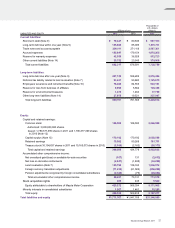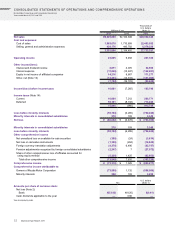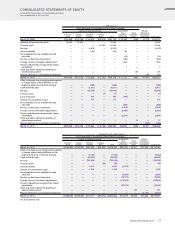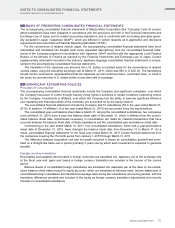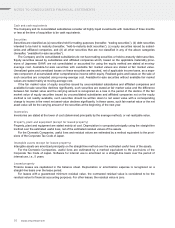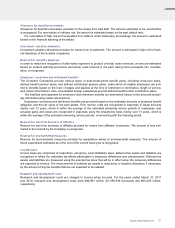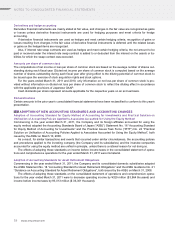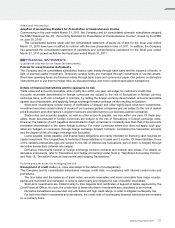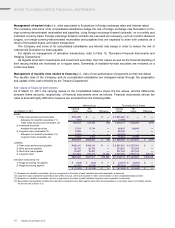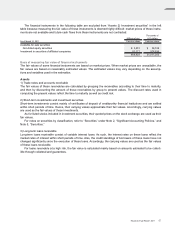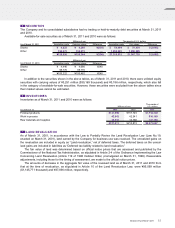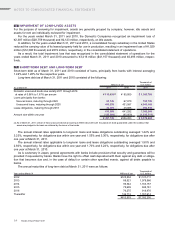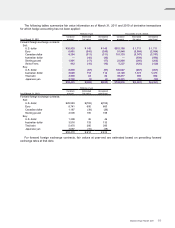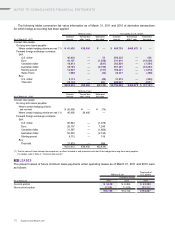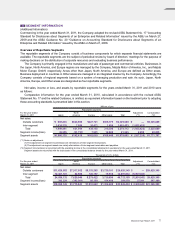Mazda 2011 Annual Report Download - page 63
Download and view the complete annual report
Please find page 63 of the 2011 Mazda annual report below. You can navigate through the pages in the report by either clicking on the pages listed below, or by using the keyword search tool below to find specific information within the annual report.
The financial instruments in the following table are excluded from “Assets 2) Investment securities” in the left
table because measuring the fair value of these instruments is deemed highly difficult: market prices of these instru-
ments are not available and future cash flows from these instruments are not contracted.
Millions of yen
Thousands of
U.S. dollars
As of March 31, 2011 Carrying values Carrying values
Available-for-sale securities
Non-listed equity securities ¥ 3,251 $ 36,169
Investment in securities of affiliated companies 81,177 978,036
¥84,428 $1,017,205
Basis of measuring fair value of financial instruments
The fair values of some financial instruments are based on market prices. When market prices are unavailable, the
fair values are based on reasonably estimated values. The estimated values may vary depending on the assump-
tions and variables used in the estimation.
Assets
1) Trade notes and accounts receivable
The fair values of these receivables are calculated by grouping the receivables according to their time to maturity,
and then by discounting the amount of those receivables by group to present values. The discount rates used in
computing the present values reflect the time to maturity as well as credit risk.
2) Short-term investments and investment securities
Short-term investments consist mainly of certificates of deposit of creditworthy financial institutions and are settled
within short periods of time. Hence, their carrying values approximate their fair values. Accordingly, carrying values
are used as the fair values of these investments.
As for listed stocks included in investment securities, their quoted prices on the stock exchange are used as their
fair values.
For notes on securities by classification, refer to “Securities” under Note 2, “Significant Accounting Policies,” and
Note 5, “Securities.”
3) Long-term loans receivable
Long-term loans receivable consist of variable interest loans. As such, the interest rates on these loans reflect the
market rates of interest within short periods of time. Also, the credit standings of borrowers of these loans have not
changed significantly since the execution of these loans. Accordingly, the carrying values are used as the fair values
of these loans receivable.
For loans receivable at a high risk, the fair value is calculated mainly based on amounts estimated to be collect-
ible through collateral and guarantees.
Mazda Annual Report 201 1 61


